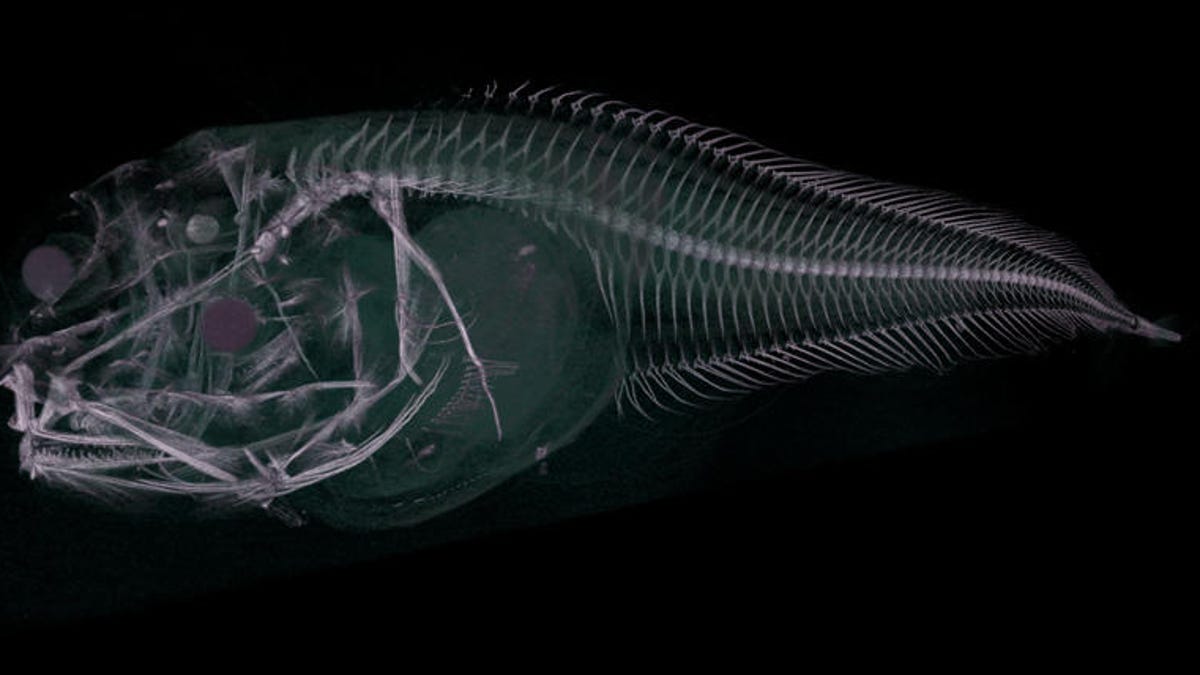Scientists discover new fish species in ocean's terrifying depths
Also seen: Backward-swimming spider crustaceans the size of your hand.
If you dive 7,500 metres below the ocean's surface, chances are you're going to see some pretty gnarly wildlife. Especially in one of the world's deepest ocean trenches.
A team of 40 scientists from 17 countries has journeyed 7.5 kilometres (4.6 miles) below the surface of the water in the Atacama Trench in the Pacific Ocean to study the creatures below, discovering three new species of fish in the process, the University of Newcastle announced Monday in a statement.
The pink, the blue and the purple Atacama Snailfish, as they've been temporarily named, were captured on camera slowly swimming around the ocean floor and chowing down on a tasty fish carcass.
"There is something about the snailfish (fish of the family Liparidae) that allows them to adapt to living very deep," said Dr. Thomas Linley, one of the scientists who worked on the project, from the University of Newcastle. "Beyond the reach of other fish they are free of competitors and predators.
"Their gelatinous structure means they are perfectly adapted to living at extreme pressure and in fact the hardest structures in their bodies are the bones in their inner ear which give them balance and their teeth. Without the extreme pressure and cold to support their bodies they are extremely fragile and melt rapidly when brought to the surface."
Despite their unthreatening name and slimy physique, Linley said the snailfish are the "top predator" at that depth and the specimens caught on camera looked "very well-fed."
But it wasn't all pastel-coloured, see-through snailfish. Delivering on science's ultimate goal of making us fear the abyss, the University of Newcastle also captured rare footage of spider-like creatures, known as Munnopsids, which are roughly the size of an adult hand.
According to the University, "These crustaceans have small bodies, extraordinarily long legs and swim backwards and upsides down, propelling themselves with paddles on their ventral side -- their 'tummies' -- before righting themselves on the seafloor and spreading their long walking legs out like a spider."
Yep. That sounds exactly like the next sentence I'll write in my nightmare journal.
To see what Mother Nature has been up to, check out the full video below:
Rebooting the Reef: CNET dives deep into how tech can help save Australia's Great Barrier Reef.
Taking It to Extremes: Mix insane situations -- erupting volcanoes, nuclear meltdowns, 30-foot waves -- with everyday tech. Here's what happens.


